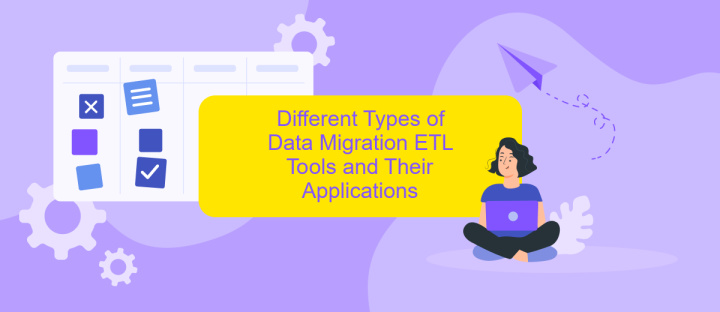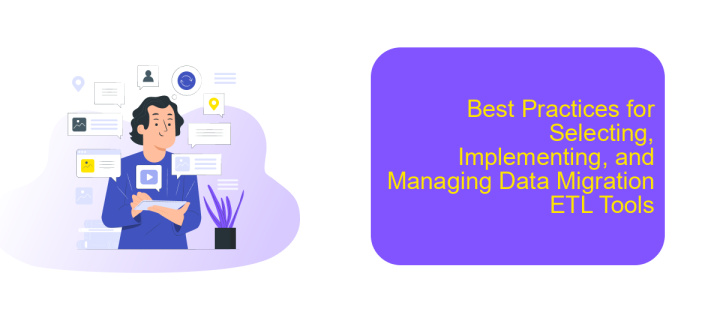Data Migration ETL Tools
Data migration ETL (Extract, Transform, Load) tools are essential for businesses looking to efficiently and accurately transfer data between systems. These tools help streamline the process by automating data extraction, transformation, and loading, ensuring data integrity and minimizing errors. In this article, we will explore the key features, benefits, and considerations when selecting the right ETL tool for your data migration needs.
Introduction and Overview of Data Migration ETL Tools
Data migration ETL (Extract, Transform, Load) tools are essential for organizations looking to transfer data between systems efficiently. These tools help streamline the process by automating data extraction from various sources, transforming it to meet the target system's requirements, and loading it into the destination system. This process ensures data integrity, accuracy, and consistency during migration.
- Automated data extraction from multiple sources
- Data transformation to match target system requirements
- Loading data into the destination system efficiently
- Ensuring data integrity and accuracy
One such tool that facilitates seamless data integration is ApiX-Drive. ApiX-Drive offers a user-friendly interface for setting up integrations between various applications and services, making the ETL process more accessible and efficient. By leveraging tools like ApiX-Drive, organizations can ensure smooth and reliable data migration, minimizing the risk of data loss or corruption.
Key Features and Benefits of Data Migration ETL Tools

Data migration ETL tools are essential for organizations to efficiently transfer data between systems. These tools offer key features such as data extraction, transformation, and loading (ETL) capabilities, which ensure that data is accurately moved from source to target systems. They also provide data validation and cleansing to maintain data integrity and quality throughout the migration process. Additionally, many ETL tools include scheduling and automation features, enabling seamless and timely data transfers without manual intervention.
One of the significant benefits of using data migration ETL tools is the ability to integrate with various data sources and destinations. Services like ApiX-Drive facilitate this by offering a user-friendly interface to set up integrations between different applications and platforms. This not only simplifies the migration process but also ensures that data remains synchronized across systems. Furthermore, ETL tools enhance scalability and performance, allowing organizations to handle large volumes of data efficiently, thereby reducing downtime and improving overall productivity.
Different Types of Data Migration ETL Tools and Their Applications

Data migration ETL tools are essential for transferring data between systems, ensuring data integrity, and improving operational efficiency. These tools come in various types, each designed for specific applications and use cases.
- Batch Processing Tools: These tools handle large volumes of data at scheduled intervals. They are ideal for periodic data migration tasks where real-time processing is not required.
- Real-Time Processing Tools: These tools enable continuous data flow between systems, making them suitable for applications that require up-to-the-minute data synchronization.
- Cloud-Based Tools: These tools offer scalable and flexible data migration solutions, often with minimal setup. They are perfect for businesses looking to migrate data to or from cloud environments.
- Open-Source Tools: These tools provide customizable and cost-effective solutions, best suited for organizations with specific needs and technical expertise.
- Integration Platforms: Services like ApiX-Drive facilitate seamless integration between various applications, automating data migration and synchronization processes.
Choosing the right ETL tool depends on the specific requirements of your data migration project. Factors such as data volume, frequency of migration, and the complexity of the data transformation processes should be considered. Tools like ApiX-Drive can significantly streamline the integration and migration process, making it easier to manage data across different systems.
Best Practices for Selecting, Implementing, and Managing Data Migration ETL Tools

When selecting Data Migration ETL tools, it is crucial to evaluate the specific needs of your organization. Consider the volume of data, the complexity of transformations, and the variety of data sources involved. A thorough assessment will help you choose a tool that aligns with your technical requirements and budget.
Implementation of ETL tools requires a structured approach. Start with a pilot project to test the tool's capabilities and identify any potential issues. Ensure your team is adequately trained and familiar with the tool's features and functionalities. Effective communication and collaboration among stakeholders are key to a successful implementation.
- Evaluate the tool's scalability and performance.
- Ensure compatibility with existing systems and data sources.
- Look for robust data transformation and cleansing capabilities.
- Consider the ease of use and user interface.
- Check for comprehensive support and documentation.
Managing ETL tools involves continuous monitoring and optimization. Regularly review performance metrics and address any bottlenecks. Utilize services like ApiX-Drive to streamline integrations and automate data workflows, enhancing efficiency and reducing manual intervention. Stay updated with the latest features and updates to maximize the tool's potential.


Case Studies and Success Stories of Data Migration ETL Tools Implementations
One notable case study involves a global e-commerce company that successfully migrated its legacy data warehouse to a modern cloud-based solution using an advanced ETL tool. The migration process was complex, involving millions of customer records and transactional data. By leveraging the ETL tool's robust data transformation capabilities, the company ensured data integrity and minimized downtime. The result was a significant improvement in data processing speed and accessibility, leading to enhanced business intelligence and decision-making capabilities.
Another success story features a healthcare provider that integrated multiple data sources into a unified data warehouse using ApiX-Drive. The ETL tool facilitated seamless data migration and integration from various electronic health record (EHR) systems, ensuring compliance with healthcare regulations. ApiX-Drive's user-friendly interface and automated workflows enabled the healthcare provider to streamline data management processes, ultimately improving patient care and operational efficiency. These examples highlight how effective ETL tools can drive successful data migration projects across different industries.
FAQ
What is data migration in the context of ETL tools?
What are the key features to look for in ETL tools for data migration?
How can I ensure data quality during migration?
Can I automate the data migration process?
What are some common challenges in data migration and how can they be addressed?
Time is the most valuable resource in today's business realities. By eliminating the routine from work processes, you will get more opportunities to implement the most daring plans and ideas. Choose – you can continue to waste time, money and nerves on inefficient solutions, or you can use ApiX-Drive, automating work processes and achieving results with minimal investment of money, effort and human resources.

